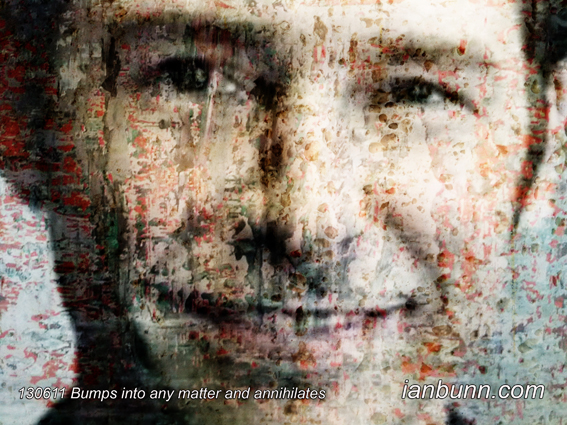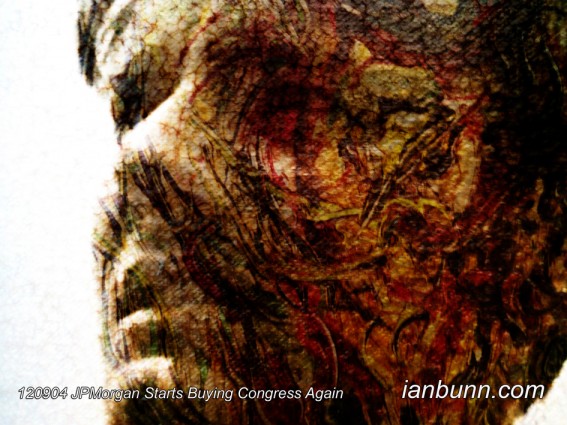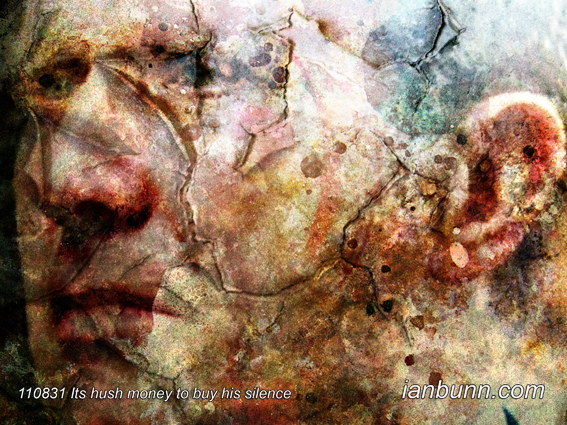 Bumps into any matter and annihilates (June 11 2013)
Bumps into any matter and annihilates (June 11 2013)
Jason Palmer the British Science and technology reporter for the BBC News has published an article titled ‘Antigravity gets first test at Cern’s Alpha experiment’, in which he states “Researchers at Cern in Switzerland have tested a novel way to find out if antimatter is the source of a force termed “antigravity”. Antimatter particles are the “mirror image” of normal matter, but with opposite electric charge. How antimatter responds to gravity remains a mystery, however; it may “fall up” rather than down. Now researchers reporting in Nature Communications have made strides toward finally resolving that notion. Antimatter presents one of the biggest mysteries in physics, in that equal amounts of matter and antimatter should have been created at the Universe’s beginning. Yet when the two meet, they destroy each other in what is called annihilation, turning into pure light. Why the Universe we see today is made overwhelmingly of matter, with only tiny amounts of antimatter, has prompted a number of studies to try to find some difference between the two. Tests at Cern’s LHCb experiment and elsewhere, for example, have been looking for evidence that exotic particles decay more often into matter than antimatter. …the LHCb team reported a slight difference in the decay of particles called Bs mesons – but still not nearly enough to explain the matter mystery. One significant difference between the two may be the way they interact with gravity – antimatter may be repelled by matter, rather than attracted to it. But it is a difference that no one has been able to test – until the advent of Cern’s Alpha experiment. Alpha is an acronym for Antihydrogen Laser Physics Apparatus – an experiment designed to build and trap antimatter “atoms”. Just as hydrogen is made of a proton and an electron, antihydrogen is an atom made of their antimatter counterparts antiprotons and positrons. The trick is not just in making it, but in making it hang around long enough to study it – before it bumps into any matter and annihilates…”
Inspired by Jason Palmer, BBC ow.ly/laBDO Image source LinkedIn ow.ly/laBo8

![Gilles van Kote the French reporter and Deputy Head of Environment and Science for the daily Le Monde, has published an article on Worldcrunch titled ‘How A Palm Oil Boom Is Tearing Apart The Indigenous Tribes Of The Philippines’. Van Kote states “The palm oil plantation, started in 2005 by Nakeen, a subsidiary of the Filipino group A. Brown Company Inc. (ABCI), is very small – 200 hectares. Yet it still managed to upset the natural balance of this isolated northern region of the island of Mindanao, south of the Philippines archipelago… In 2008, the Hagpa Higaonon [tribe, one of the country’s many indigenous communities] was awarded a certificate of ancestral domain title (CADT) for 14,313 hectares of their territory, in accordance with the Indigenous Peoples Rights Acts. A victory that doesn’t, however, make them immune to other people’s greed. Nakeen has already announced its ambition to expand its plantation, which is already partly on the ancestral domain. …The arrival of Nakeen and its oil palms created a rift in the local population. The local authorities wanted to turn the region into the "capital of palm oil" in Mindanao. …Nakeen offered locals between 5,000 and 8,000 pesos ($121 and $194) a year per hectare to rent their land for 25 years. …for a daily wage of 200 pesos ($4,87). …The Alternative Forum for Research in Mindanao (Afrim), a Filipino organization, claims that these rental agreements "turn farmers into farm workers" and that "jobs are only available for a small percentage of the population – for a wage inferior to the minimum legal wage." …While an oil palm plantation in place of a forest that is already being exploited isn’t considered as deforestation in the Philippines, the environmental impact is very real. …an international mission launched by NGOs concerning another Filipino group in northern Mindanao found that the rental agreements were illegal and human rights were violated. “ Inspired by Gilles Van Kote, Worldcrunch ow.ly/gR3Em Image source Mediapart ow.ly/gR3zO](http://www.ianbunn.com/wp-content/uploads/2013/01/130122dcU60.jpg)

